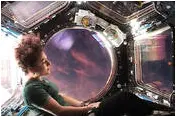25 Years Of Meatbags Permanently In Space On The Iss
Anyone turning 25 this week has never known a time when humans weren’t living in space. The same might not be true when they’re 30.
On November 2, 2000, the first crew docked with the International Space Station. Commander Bill Shepherd and cosmonauts Yuri Gidzenko and Sergei Krikalev arrived aboard Soyuz TM-31, entering a station barely ready for habitation.
Shepherd was a veteran of three Space Shuttle flights, and Gidzenko and Krikalev both had stints on the Mir space station. The early days of the ISS would test all three.
The ISS in 2000 bore little resemblance to today’s sprawling outpost. Its iconic solar arrays had yet to arrive, and the majority of its modules were still works in progress on Earth. It contained just three pressurized modules – Zvezda, Zarya (also referred to as the Functional Cargo Block), and the US-built Unity module.
Jim Orberg, author of Star-Crossed orbits quoted a veteran space-worker who captured the situation bluntly: “We launched the space shuttle when we were 90 percent ready. But we’re launching the space station at only 50 percent.”
The crew faced that reality immediately. Glitchy software required workarounds and patching. Hardware malfunctioned. Without proper solar arrays, power from the Russian modules couldn’t supply the American hardware, so Unity (also known as Node 1) remained sealed off. The three astronauts squeezed into cramped Russian quarters designed for two.
Commander Shepherd kept a mission log documenting the chaos. Systems regularly malfunctioned, and the crew struggled to get the printer working Even the tool for reporting problems — the “crew squawk” — refused to start.
In a postflight report, Oberg mentions the commander describing the station as “unsafe” due to the amount of stowage; indeed, storage has continued to present a challenge for crews, to the point that one of the Multi-Purpose Logistics Modules (used to transport cargo on the Space Shuttle) was modified to become a permanent fixture on the ISS.
Yet various crews persevered and through the 2000s, the station grew dramatically. Space Shuttles hauled up the massive truss structure, solar arrays, laboratories, and additional modules. The station reached its current configuration by 2011, when the shuttle program ended. Crew size expanded from three to six, now seven — three in a Russian Soyuz, four in a SpaceX Crew Dragon.
Each crew increment was scheduled to last 12 months, although several longer-duration missions occured, both planned and unplanned. The occasional near-disaster took place too, such as Italian astronaut Luca Parmitano’s helmet filling with water during a spacewalk.
Over the last quarter of the century, the ISS has hosted a permanent human presence. Not, however, for much longer.
The ISS is dying. Zvezda, built in the 1980s for the never completed Mir 2, now leaks air from aging seams and its systems are past their best. NASA and its partners plan to deorbit the station by decade’s end. In 2024, NASA signed a deal with SpaceX and it is likely a modified Dragon spacecraft will fire its engines to send the ISS to a controlled destruction in the Pacific Ocean.
And then what? NASA originally planned commercial stations to replace the ISS, but timelines have slipped repeatedly. The agency recently downgraded requirements from permanent crews to month-long visits — four astronauts at a time instead of seven living full-time in orbit.
Perhaps we don’t need humans up there. Crew members spend much of their time maintaining the station itself. Companies like Varda have demonstrated that manufacturing works fine in space without meatbags.
But habits are hard to break, especially 25 year-old ones. Humanity has grown accustomed to always having someone overhead, circling the planet every 90 minutes. When the ISS falls, that presence ends — at least for now.
So please, raise a glass to 25 years of a continuous human presence in space. It might be a while before another outpost achieves the same milestone. ®
Support Our Work
A considerable amount of time and effort goes into maintaining this website, creating backend automation and creating new features and content for you to make actionable intelligence decisions. Everyone that supports the site helps enable new functionality.
If you like the site, please support us on Patreon or Buy Me A Coffee using the buttons below.


![[QILIN] - Ransomware Victim: Wasserverband Wulkatal 3 image](https://www.redpacketsecurity.com/wp-content/uploads/2024/09/image-300x300.png)

![Cobalt Strike Beacon Detected - 47[.]116[.]208[.]81:8001 6 Cobalt-Strike](https://www.redpacketsecurity.com/wp-content/uploads/2021/11/Cobalt-Strike-300x201.jpg)
